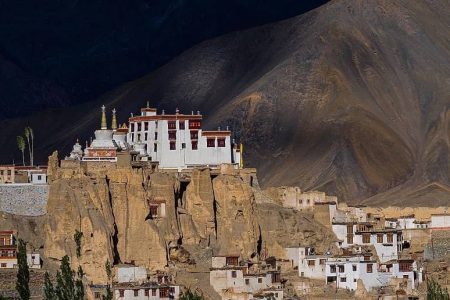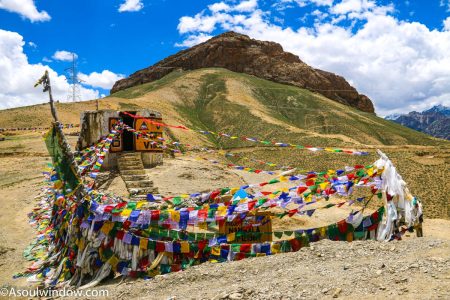Conclusion
Lamayuru Monastery is not just a place of worship; it is a testament to the enduring spiritual heritage of Ladakh’s high-altitude borderlands.
Situated about 127 kilometers west of Leh, Lamayuru Monastery is one of the most ancient and revered monasteries in Ladakh. Known as the “Moonland Monastery,” it is believed to have been founded in the 10th century by Mahasiddha Naropa, a renowned Buddhist scholar. Lamayuru is part of the Drukpa Kagyu lineage of Tibetan Buddhism and is one of the most historically significant monasteries in the region.
The monastery’s unique location atop a craggy hill offers breathtaking views of the surrounding lunar-like landscape, which is how the “Moonland” name originated. The barren terrain around the monastery resembles the surface of the moon, with jagged hills and sandy formations that create a surreal backdrop to the vibrant monastery. Lamayuru is home to several ancient temples, shrines, and stupas, and houses murals, thangkas, and statues that depict the life of Buddha and various Bodhisattvas.
The spiritual and cultural importance of Lamayuru Monastery extends beyond its architectural beauty. The monastery is home to a small community of monks who engage in daily prayer, meditation, and study. The monastery’s main festivals, such as the Yuru Kabgyat Festival, feature elaborate masked dances and religious ceremonies that attract both locals and visitors. These dances symbolize the triumph of good over evil and provide a glimpse into the rich Buddhist traditions of the region.
For travelers, Lamayuru Monastery offers a perfect blend of history, culture, and natural beauty. Its remote location and serene atmosphere make it an ideal place for reflection, while its vibrant spiritual life offers a unique opportunity to experience Tibetan Buddhism in its purest form. The journey to Lamayuru itself is an adventure, with winding mountain roads leading to one of the most visually stunning and spiritually enriching sites in Ladakh.
Whether you’re a seeker of faith or beauty, Lamayuru Monastery promises to touch your soul and stay etched in your Ladakhi memories forever.






